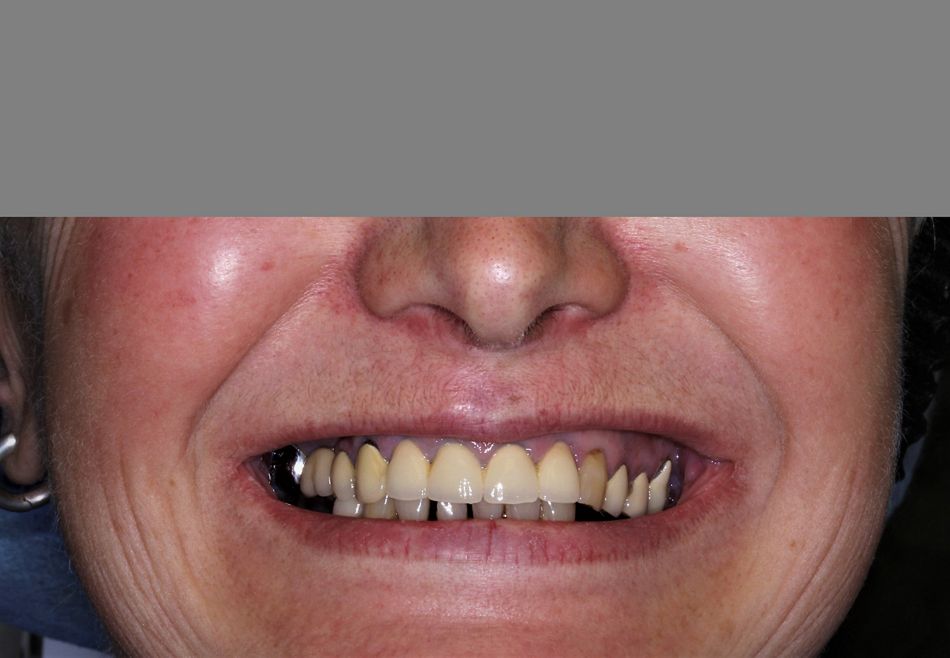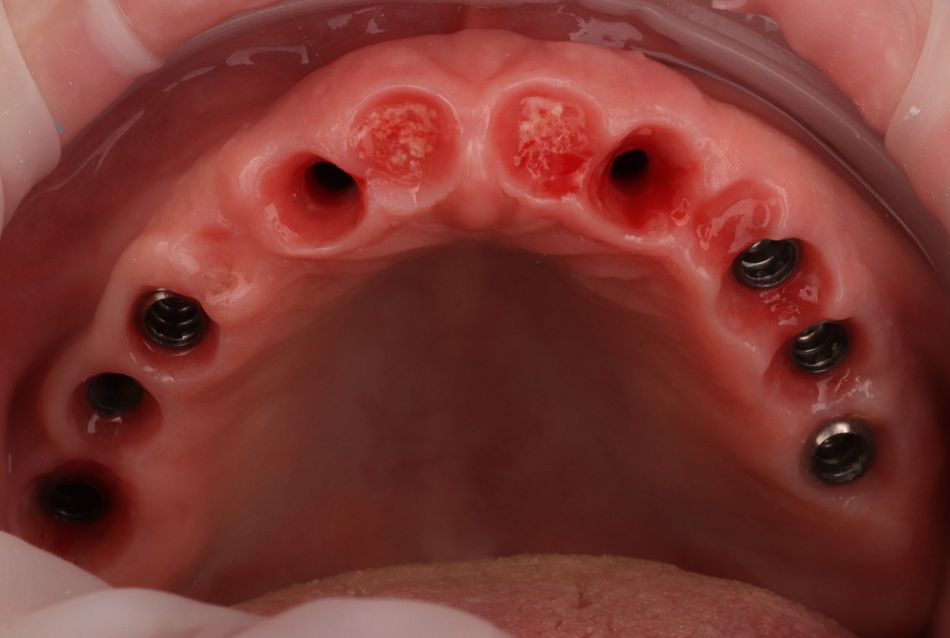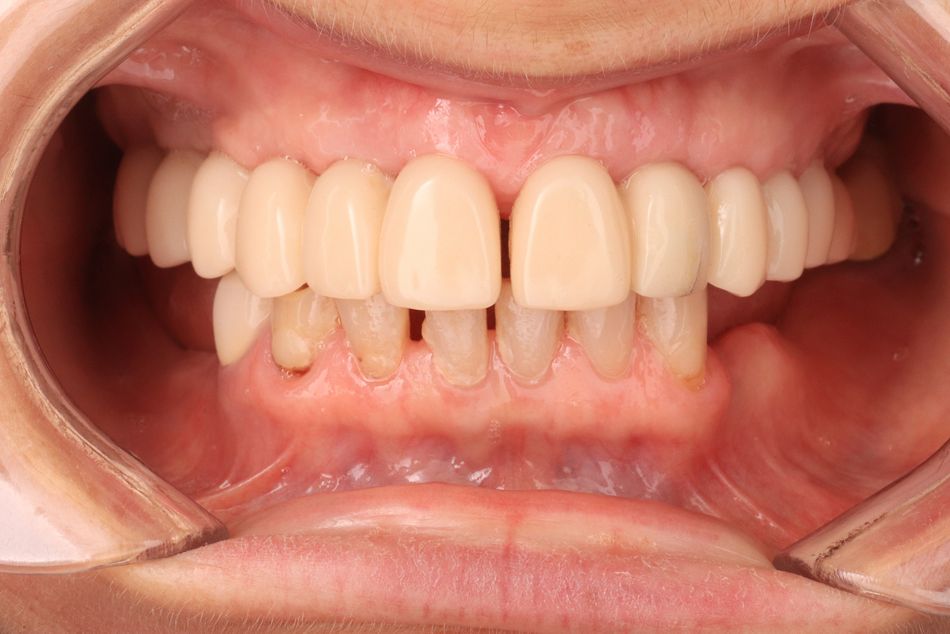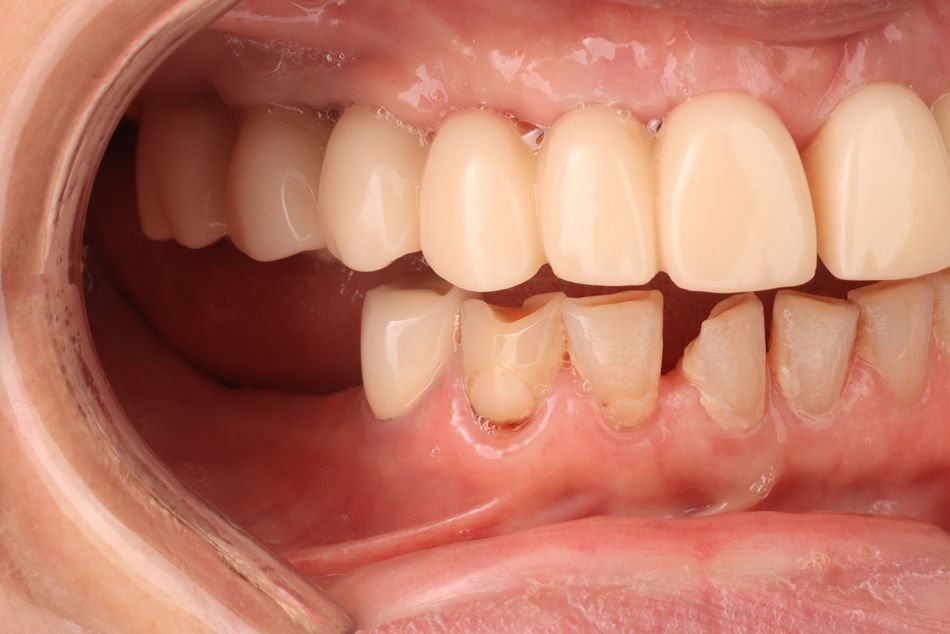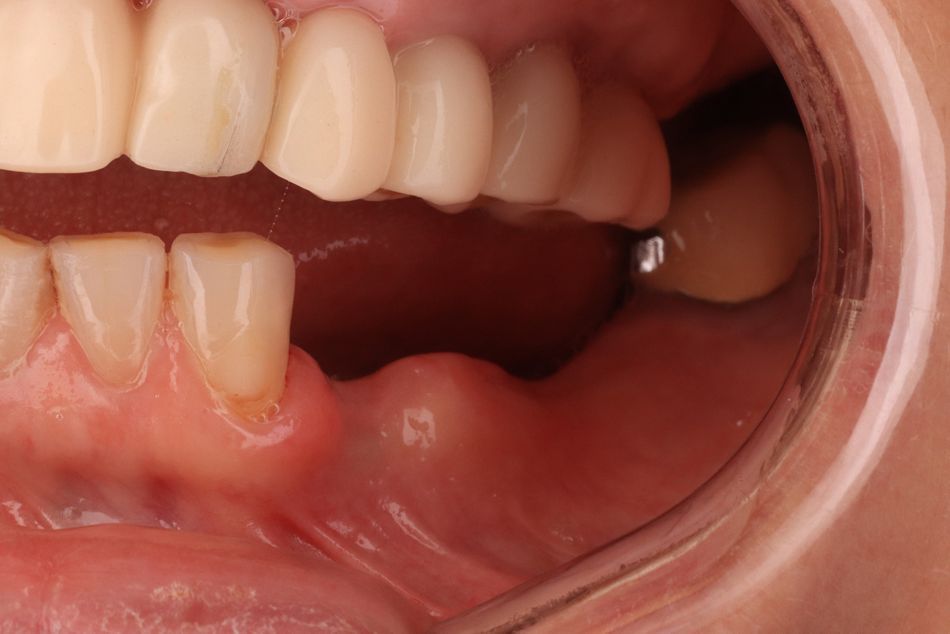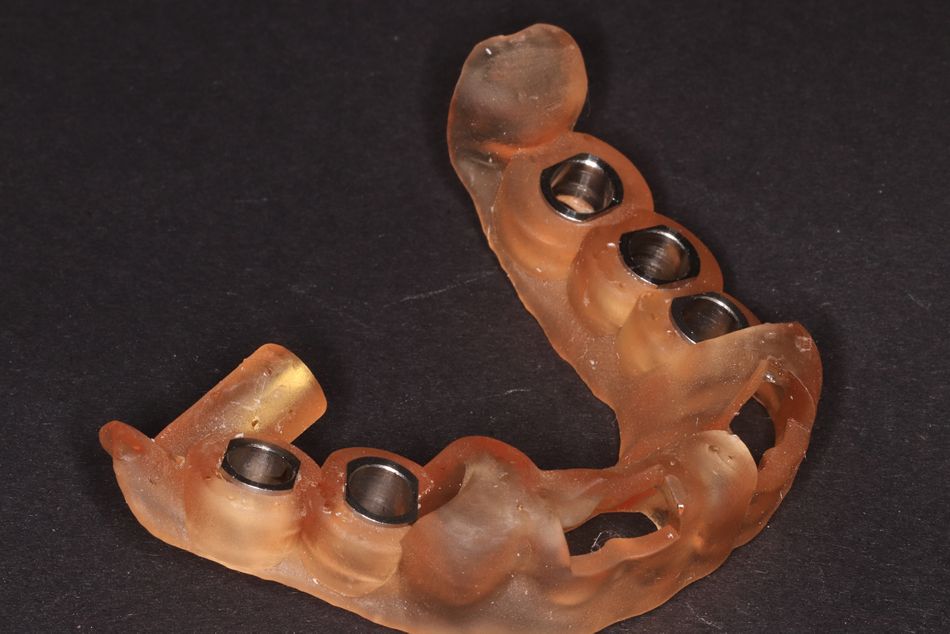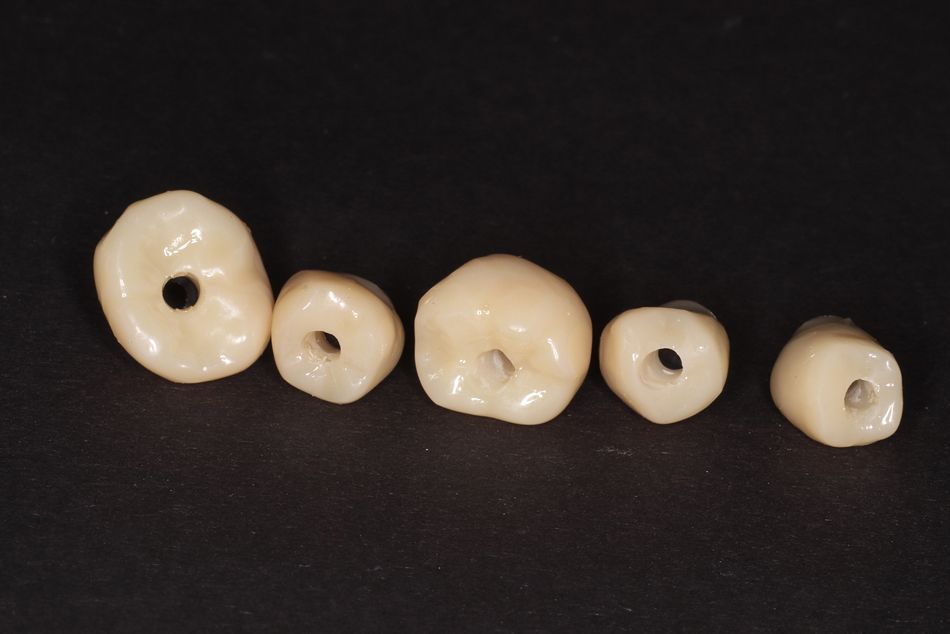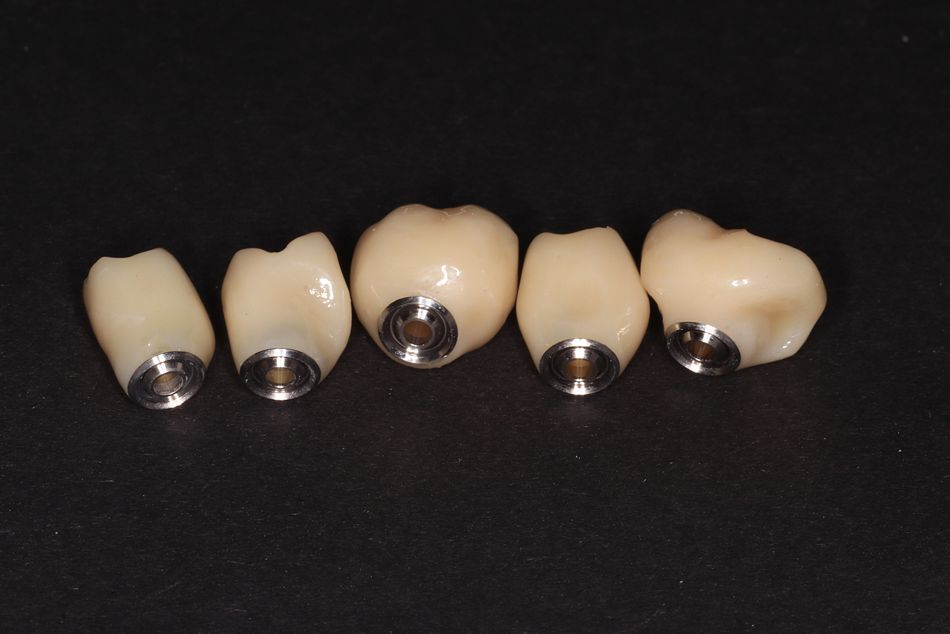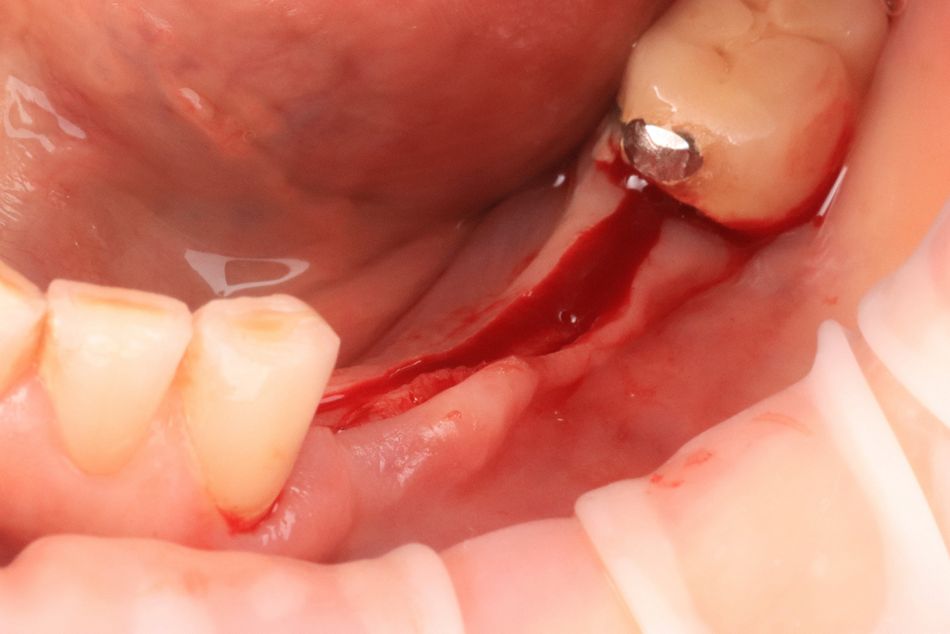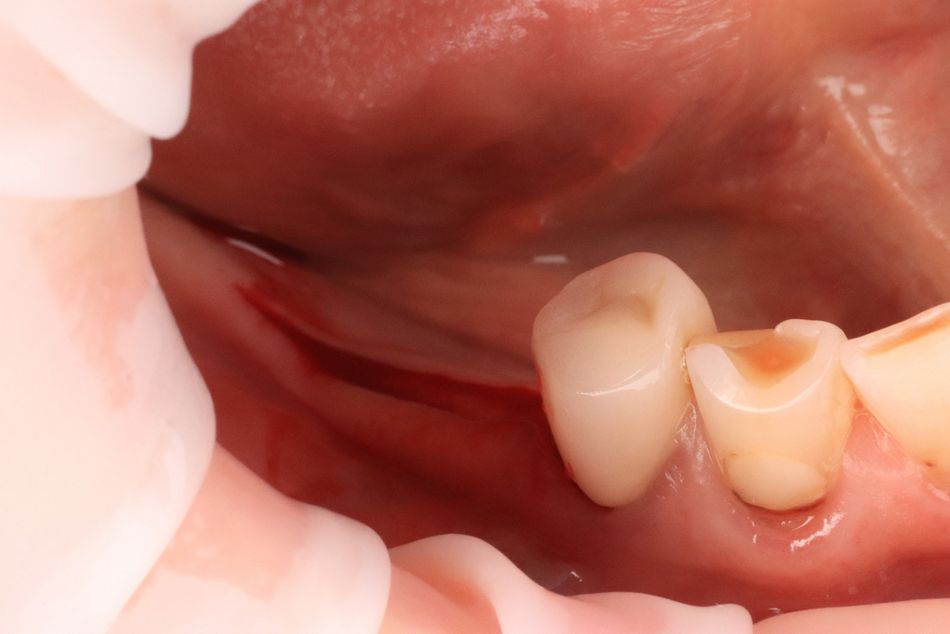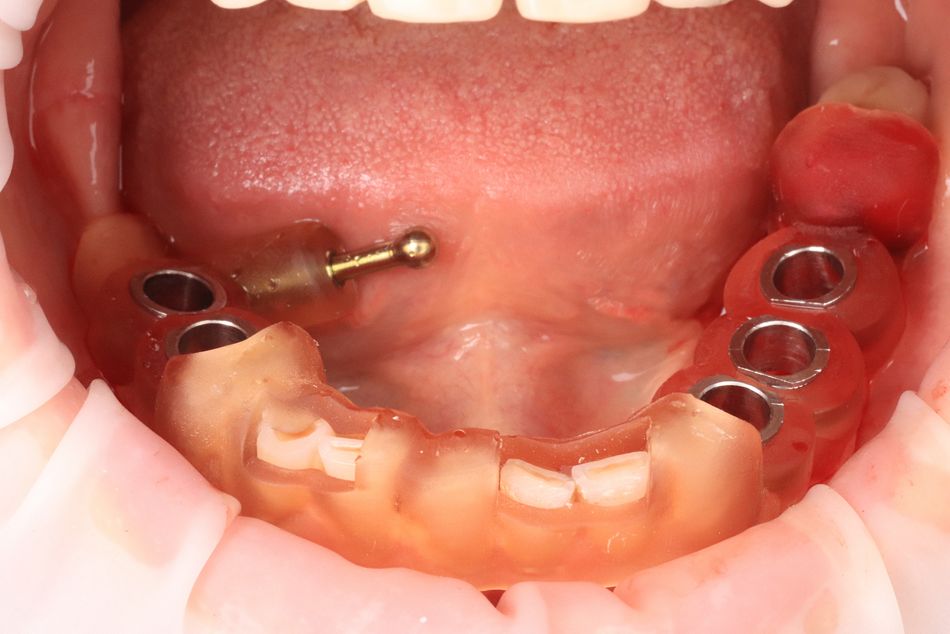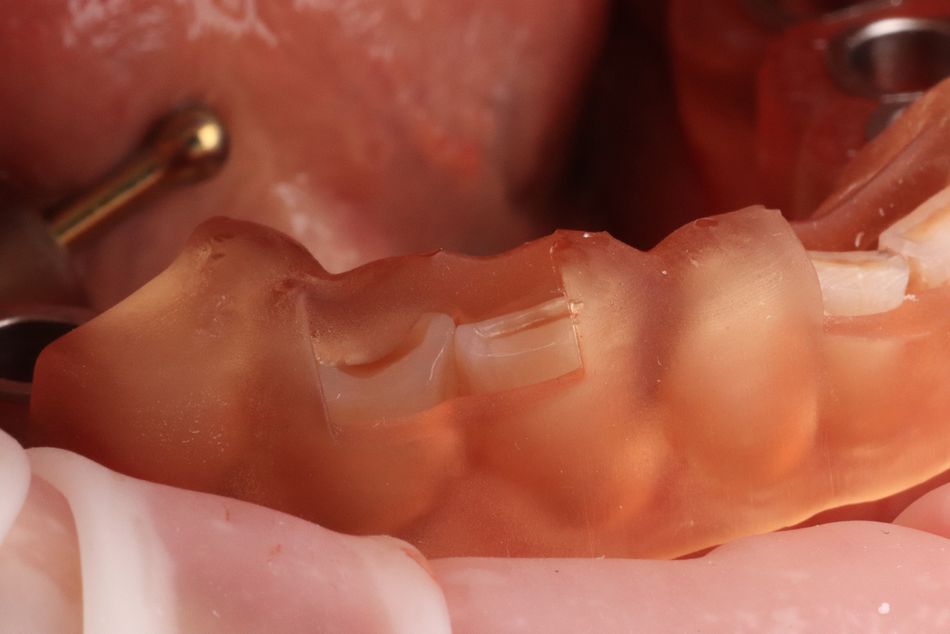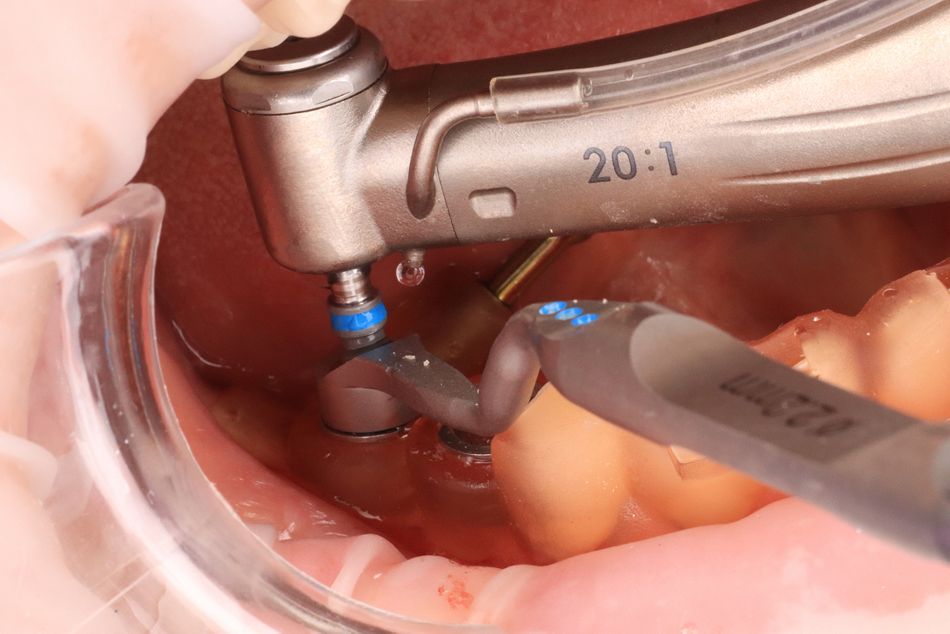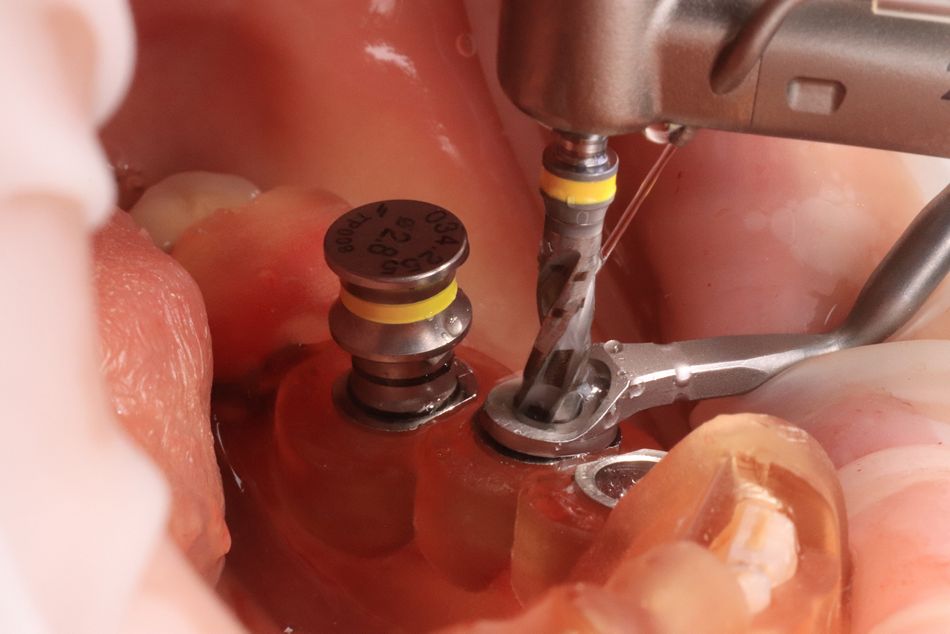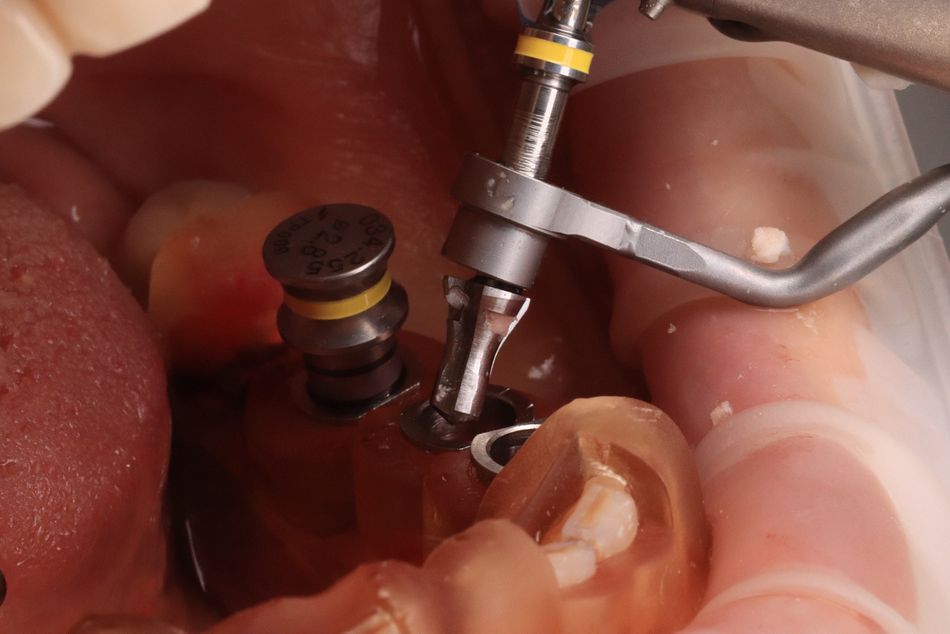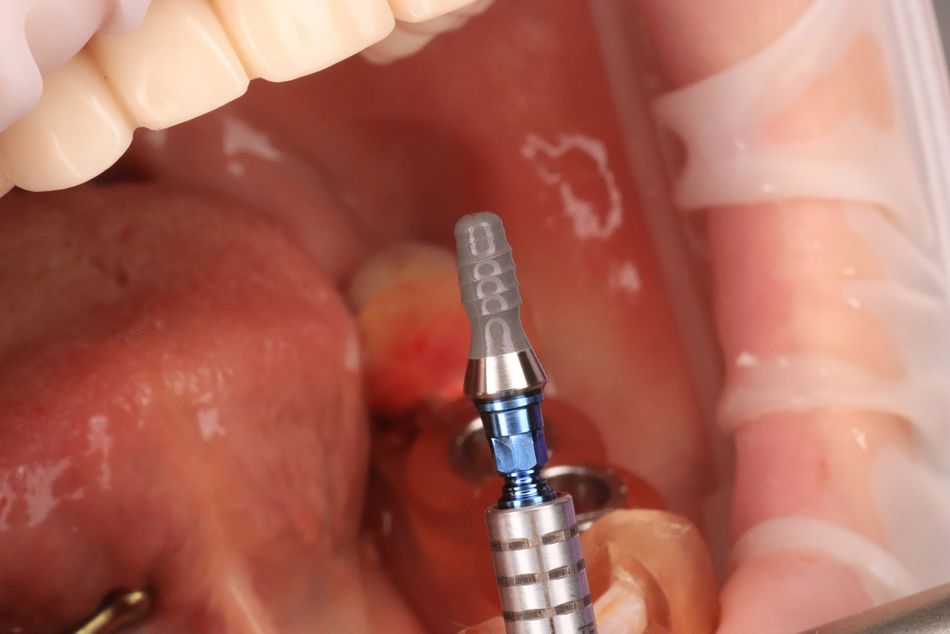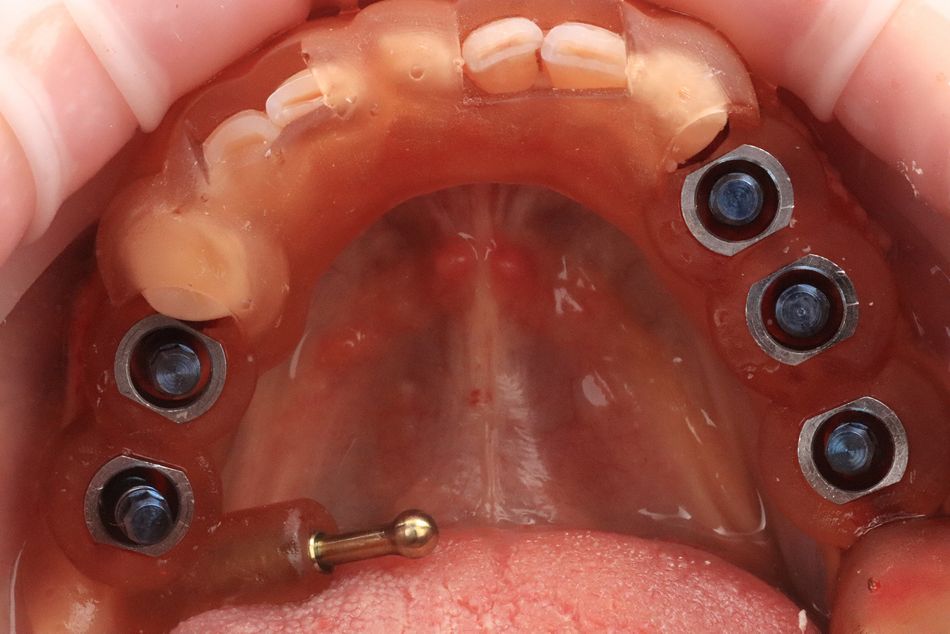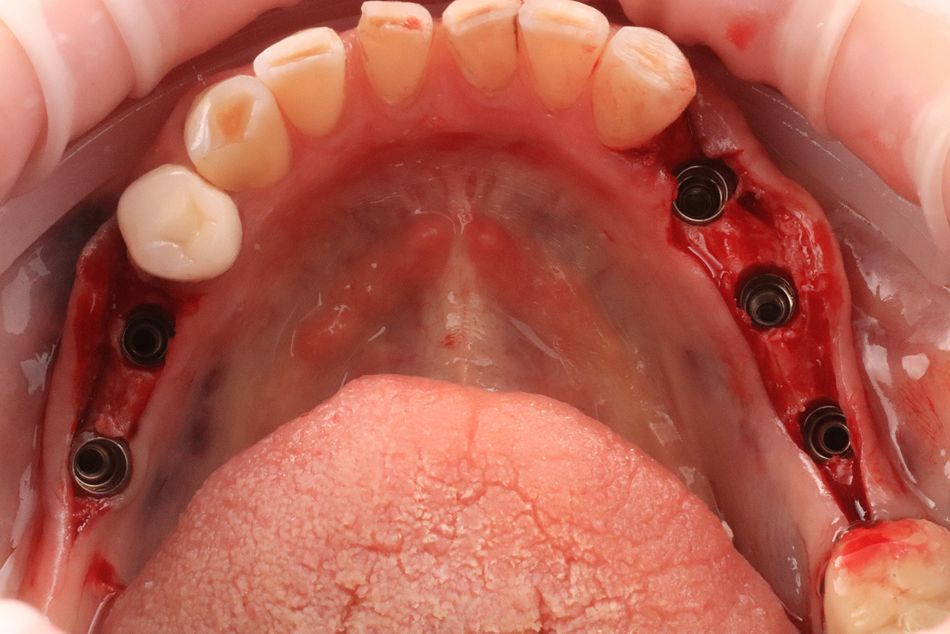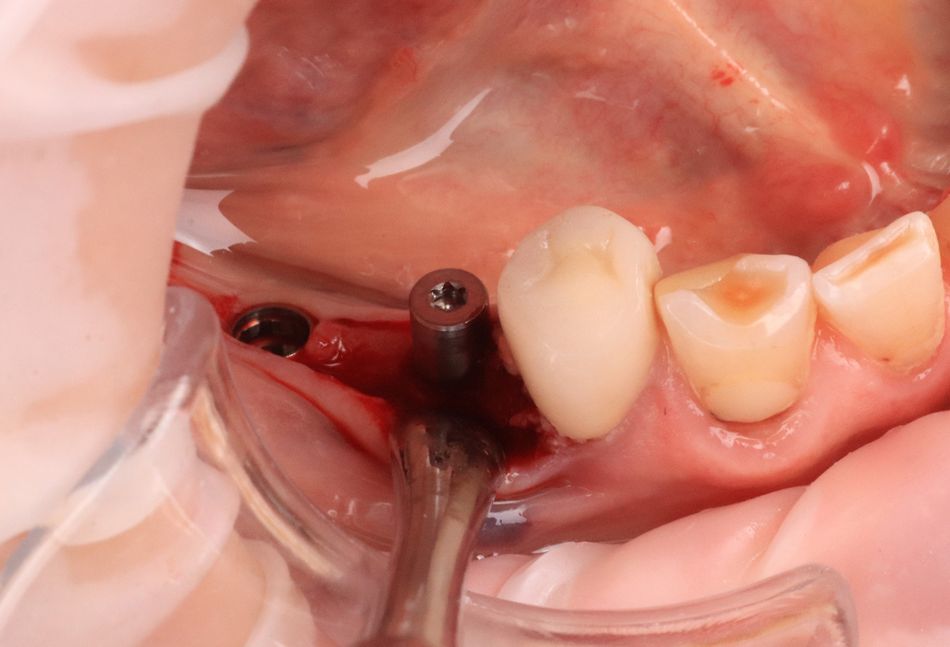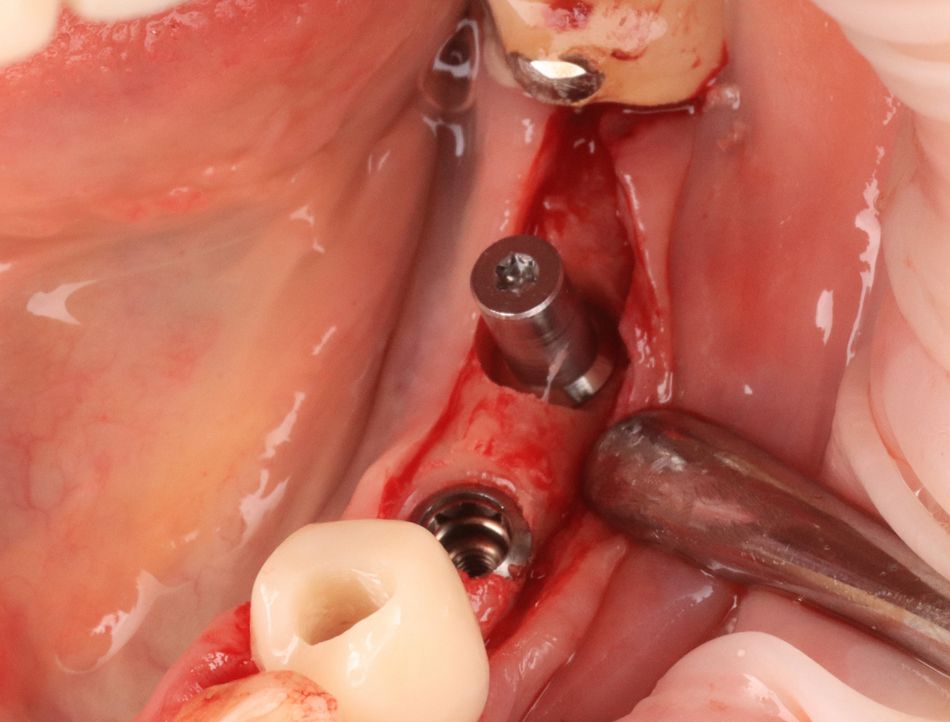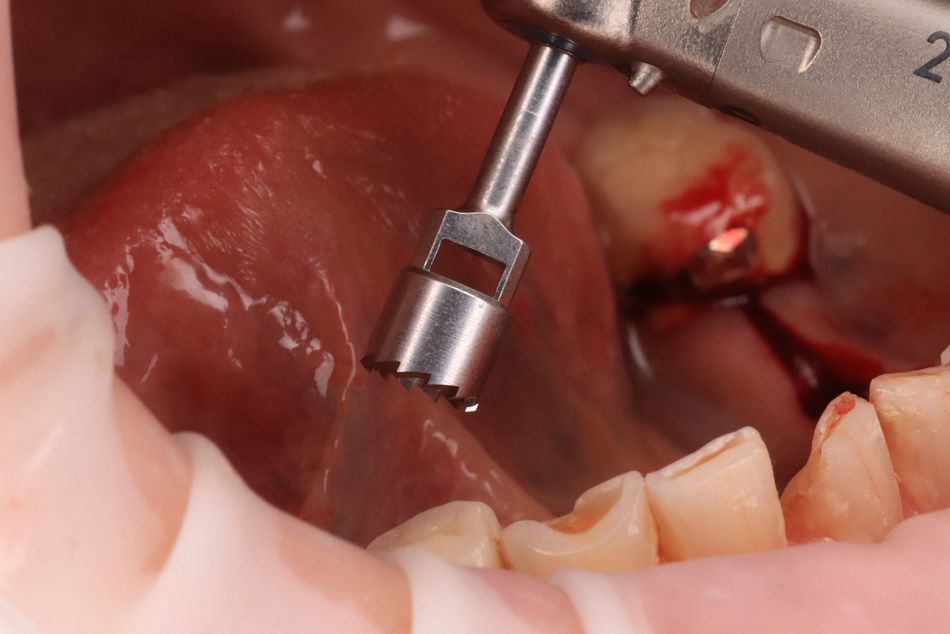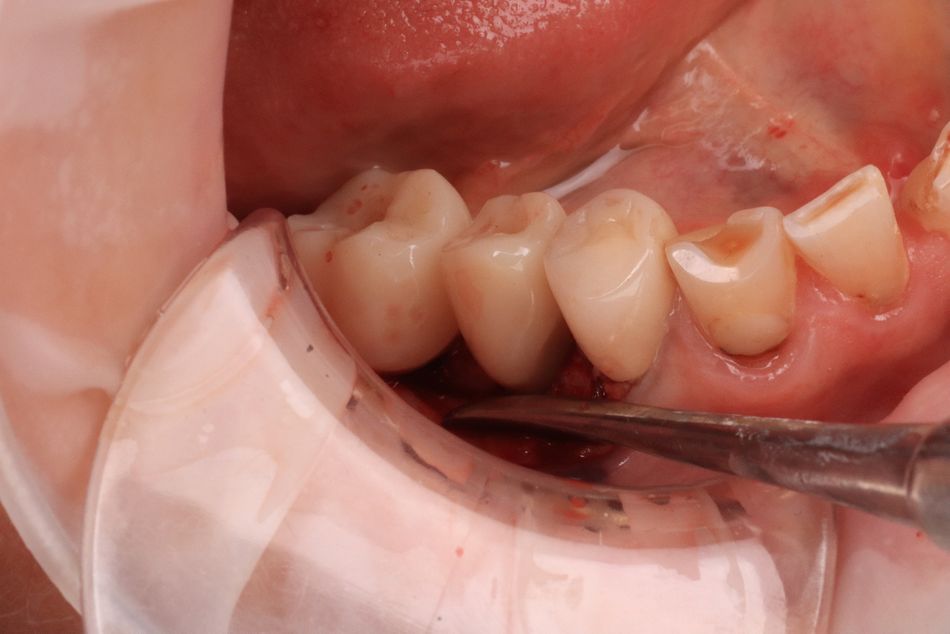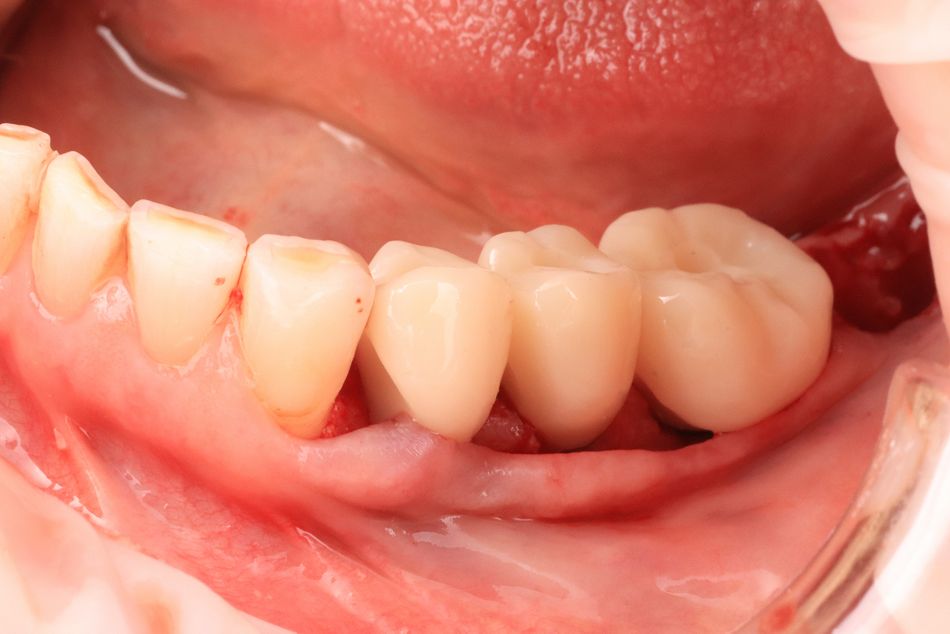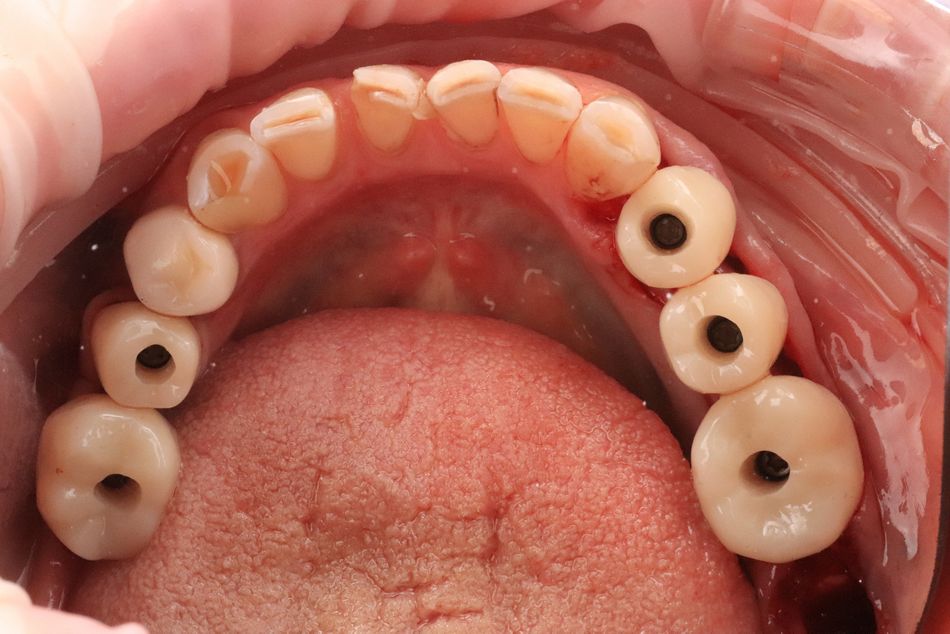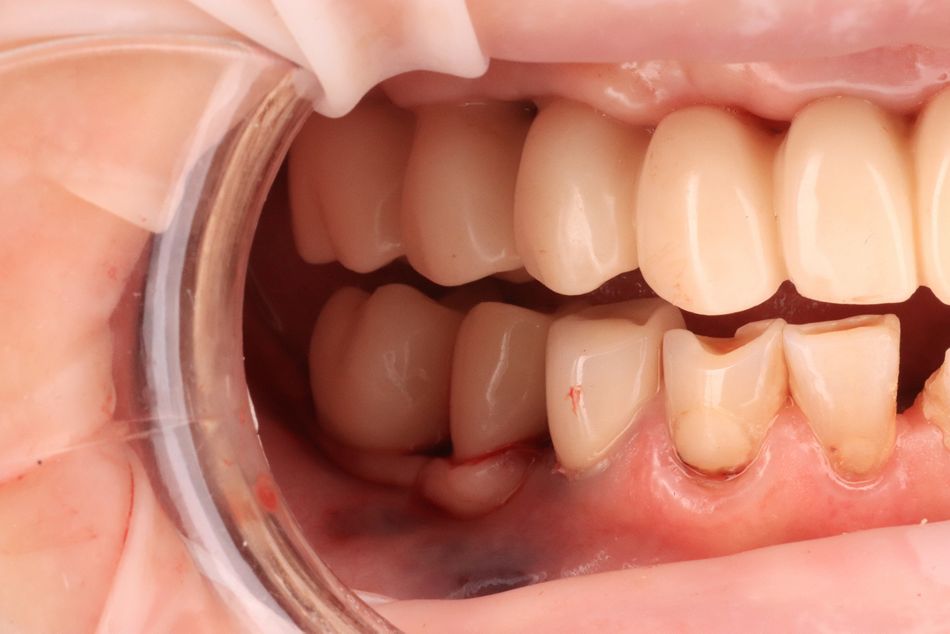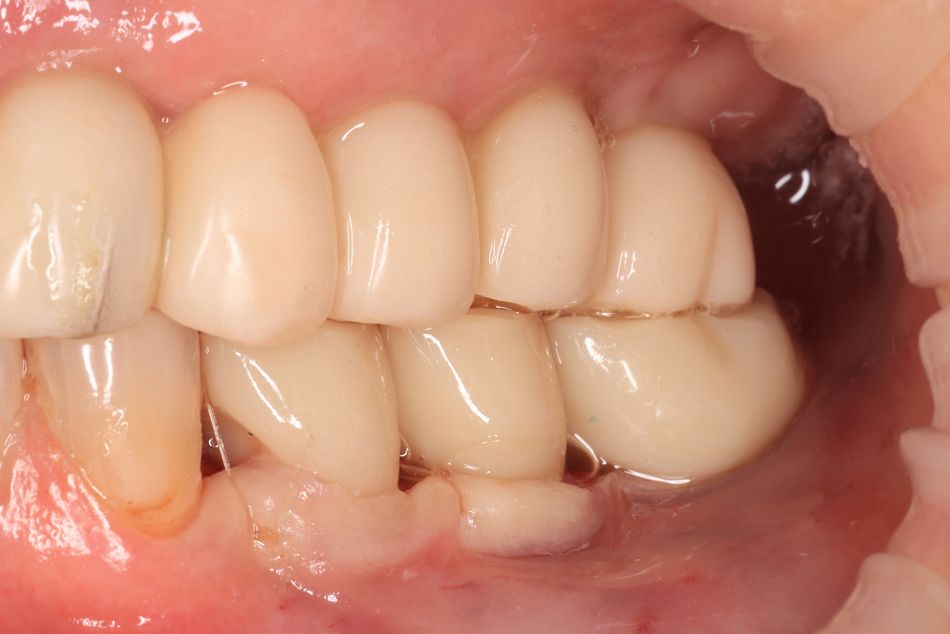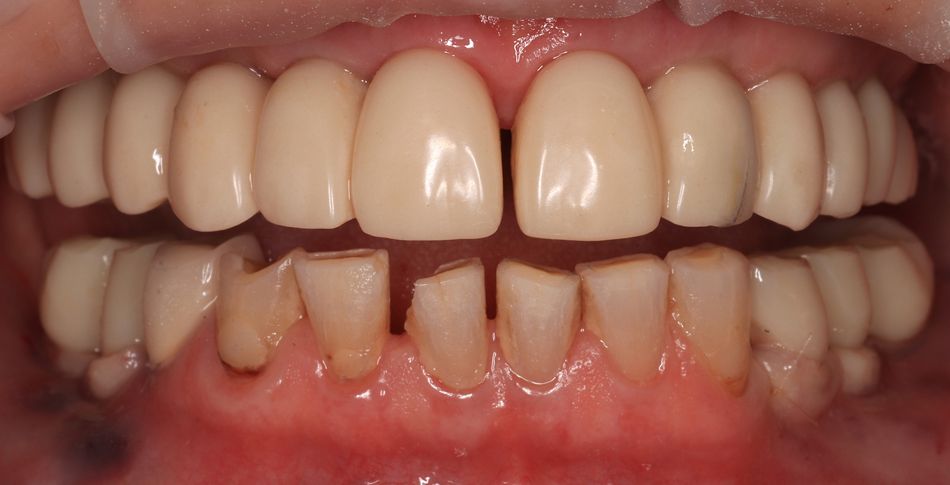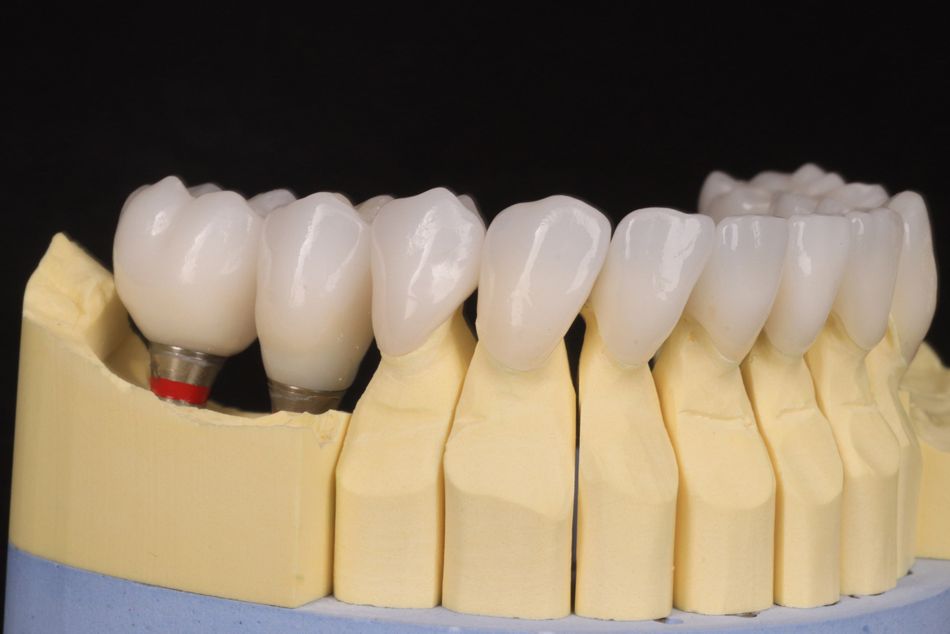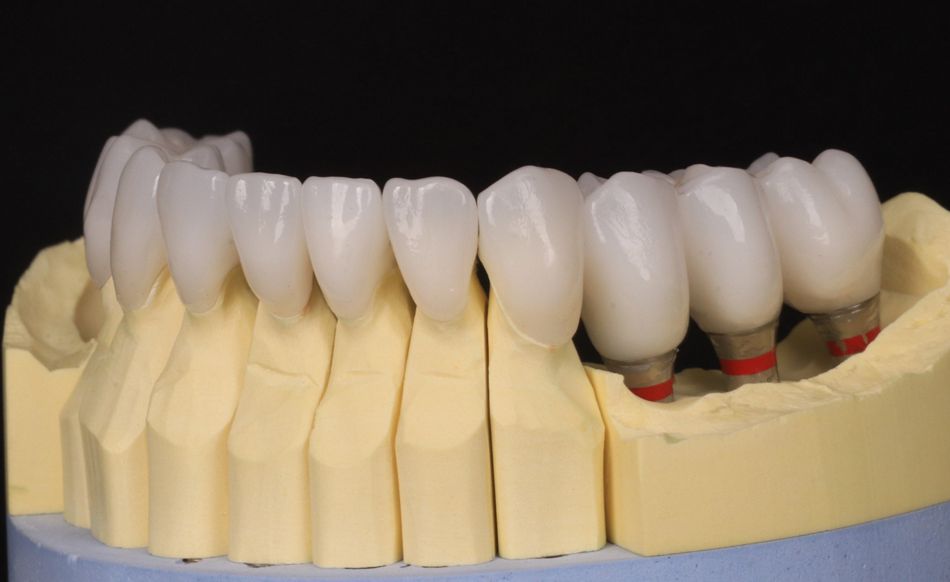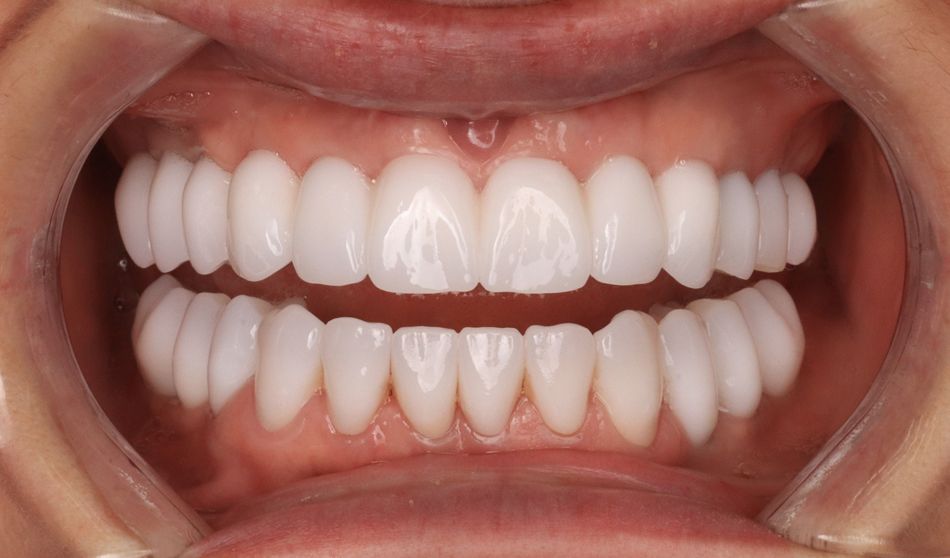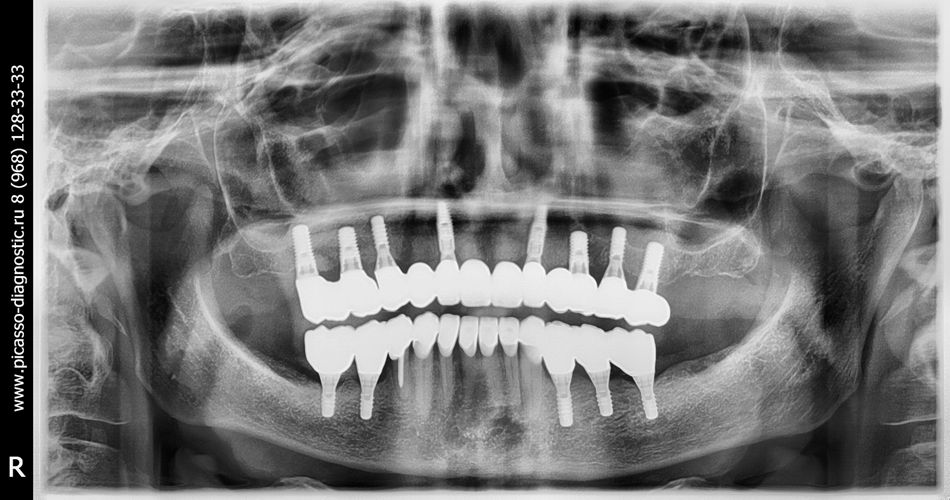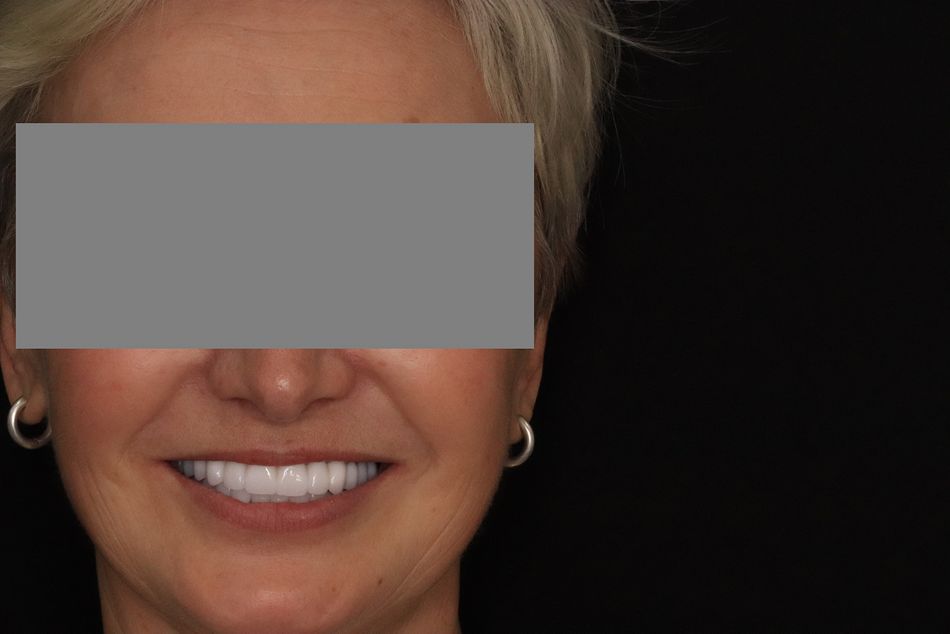Initial situation
A non-smoker and systemically healthy 48-year-old female patient came to our clinic with partially edentulous areas in the upper and lower jaws (Fig. 1). Her dental history revealed implants that were conventionally placed and provisionally restored a year ago. She considered the experience to be rather prolonged, and this time she expressed a strong desire to have implants placed and restored immediately in the same appointment.
Treatment planning
The clinical examination and CBCT analysis revealed a significant deficit in the bone and soft tissue volume. Two years ago, eight implants had been placed in the upper jaw according to a conventional non-digital protocol. Since then, the patient has had a provisional restoration awaiting implantation in the lower jaw (Figs. 2-5). To meet the patient expectations, an immediate provisionalization and loading using a Straumann® Guided Surgery solution was planned. The color and shape of the provisionals were determined according to the patient’s requests and expectations. In cases with severe deficit of bone volume, the guided surgery approach can help achieve more precise positioning of the implants using a surgical guide. The surgical guide was planned based on the patient’s CBCT data using coDiagnostiX® software and then 3D printed. The same planning was used to plan provisionals, which were then pre-fabricated before the surgery so that the patient could leave the clinic with a fully functional temporary prosthesis (Figs. 7,8).
Surgical procedure

